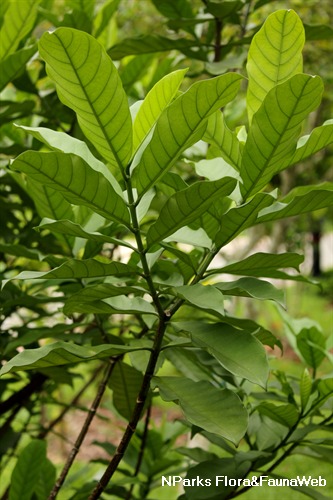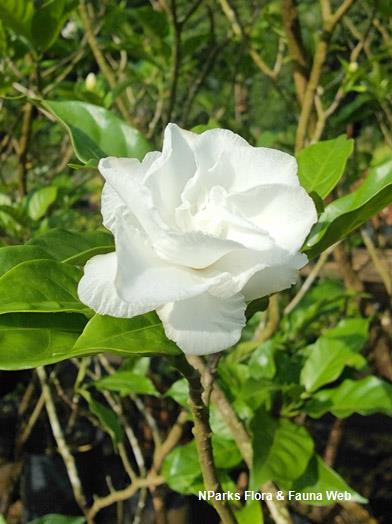
Name
Classifications and Characteristics
| Plant Division | Angiosperms (Flowering Seed Plants) |
|---|---|
| Plant Growth Form | Tree, Shrub |
| Mode of Nutrition | Autotrophic |
Biogeography
| Native Distribution | Africa |
|---|---|
| Native Habitat | Terrestrial |
| Preferred Climate Zone | Tropical |
| Local Conservation Status | Non-native (Spontaneous (Casual)) |
Description and Ethnobotany
| Growth Form | Shrub or small tree, reaching up to about 4 - 6 m tall. |
|---|---|
| Foliage | Dark green leathery leaves measuring about 12 - 15 cm long, simple and opposite. |
| Flowers | White 5 petal fragrant flowers with a yellow tinge in the centre, measuring about 8 - 10 cm across. |
| Fruit | Yellow ripe fruits in globular pairs, measuring about 5 - 6 cm. |
| Etymology | Genus Tabernaemontana is named after Jakob Theodor von Bergzaben (1520 - 1590) (Latinised surname Tabernaemontanus meaning "tavern in the mountain"), who was a German herbalist. Species africana means from Africa. |
Landscaping Features
| Desirable Plant Features | Ornamental Flowers, Fragrant (Flowers) |
|---|---|
| Landscape Uses | Parks & Gardens, Small Gardens |
Plant Care and Propagation
| Light Preference | Full Sun, Semi-Shade |
|---|---|
| Water Preference | Moderate Water |
| Plant Growth Rate | Moderate |
| Rootzone Tolerance | Moist Soils, Acidic (low pH) Soils |
| Propagation Method | Seed |
Foliar
| Mature Foliage Colour(s) | Green |
|---|---|
| Foliar Type | Simple / Unifoliate |
| Foliar Arrangement Along Stem | Opposite |
| Foliar Attachment to Stem | Petiolate |
| Foliar Venation | Pinnate / Net |
Floral (Angiosperm)
| Flower Colour(s) | White |
|---|---|
| Flowering Opening Time | Daytime |
Fruit, Seed and Spore
| Mature Fruit Colour(s) | Yellow / Golden |
|---|
Image Repository
Others
| Master ID | 29904 |
|---|---|
| Species ID | 4213 |
| Flora Disclaimer | The information in this website has been compiled from reliable sources, such as reference works on medicinal plants. It is not a substitute for medical advice or treatment and NParks does not purport to provide any medical advice. Readers should always consult his/her physician before using or consuming a plant for medicinal purposes. |





.jpg)


